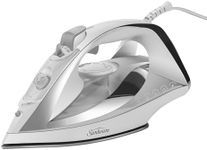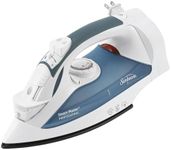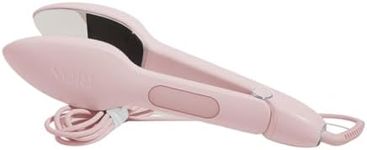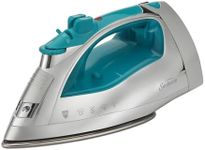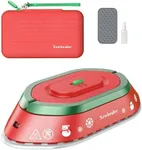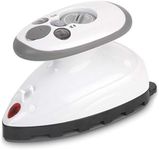Buying Guide for the Best Sunbeam Steam Irons
Choosing the right steam iron can make a significant difference in how efficiently and effectively you can iron your clothes. When selecting a steam iron, it's important to consider various features and specifications to ensure you get the best fit for your needs. Here are some key specs to look out for and how to navigate them.Steam OutputSteam output is the amount of steam the iron produces, usually measured in grams per minute (g/min). This spec is important because more steam can help remove wrinkles more effectively. Low steam output (up to 20 g/min) is suitable for light fabrics and occasional ironing. Medium steam output (20-40 g/min) is good for regular use and a variety of fabrics. High steam output (40+ g/min) is ideal for heavy fabrics and frequent ironing. Choose based on how often you iron and the types of fabrics you typically work with.
Water Tank CapacityThe water tank capacity determines how much water the iron can hold, which affects how long you can iron without needing to refill. Smaller tanks (up to 200 ml) are lighter and easier to handle but require more frequent refills. Medium tanks (200-300 ml) offer a balance between weight and refill frequency. Larger tanks (300+ ml) are heavier but allow for longer ironing sessions without interruption. Consider how long your typical ironing sessions are and how much you value convenience versus weight.
Soleplate MaterialThe soleplate is the bottom part of the iron that comes into contact with your clothes. Common materials include stainless steel, ceramic, and non-stick coatings. Stainless steel is durable and glides well but can be prone to sticking. Ceramic offers smooth gliding and even heat distribution but can be more fragile. Non-stick coatings prevent sticking but may wear off over time. Choose based on your preference for durability, ease of use, and maintenance.
Heat SettingsHeat settings allow you to adjust the temperature of the iron to suit different types of fabrics. Basic models may have a few settings, while advanced models offer precise temperature control. More settings provide greater flexibility and protection for delicate fabrics. If you iron a variety of fabrics, look for an iron with multiple heat settings. If you mostly iron similar types of fabrics, a simpler model may suffice.
WeightThe weight of the iron affects how easy it is to handle and how effective it is at pressing out wrinkles. Lighter irons (up to 1 kg) are easier to maneuver but may require more effort to remove wrinkles. Medium-weight irons (1-1.5 kg) offer a balance between ease of use and effectiveness. Heavier irons (1.5+ kg) can press out wrinkles more easily but may be tiring to use for extended periods. Consider your strength and how long you typically iron when choosing the weight.
Cord LengthCord length determines how much freedom of movement you have while ironing. Shorter cords (up to 2 meters) are more manageable but may limit your range. Medium cords (2-3 meters) offer a good balance between reach and manageability. Longer cords (3+ meters) provide maximum flexibility but can be cumbersome. Think about where you typically iron and how much mobility you need.
Auto Shut-OffAuto shut-off is a safety feature that turns the iron off if it’s left unattended for a certain period. This is important for preventing accidents and saving energy. Some irons shut off after a few minutes of inactivity, while others have more advanced sensors. If safety is a priority or if you tend to forget to turn off appliances, look for an iron with a reliable auto shut-off feature.

